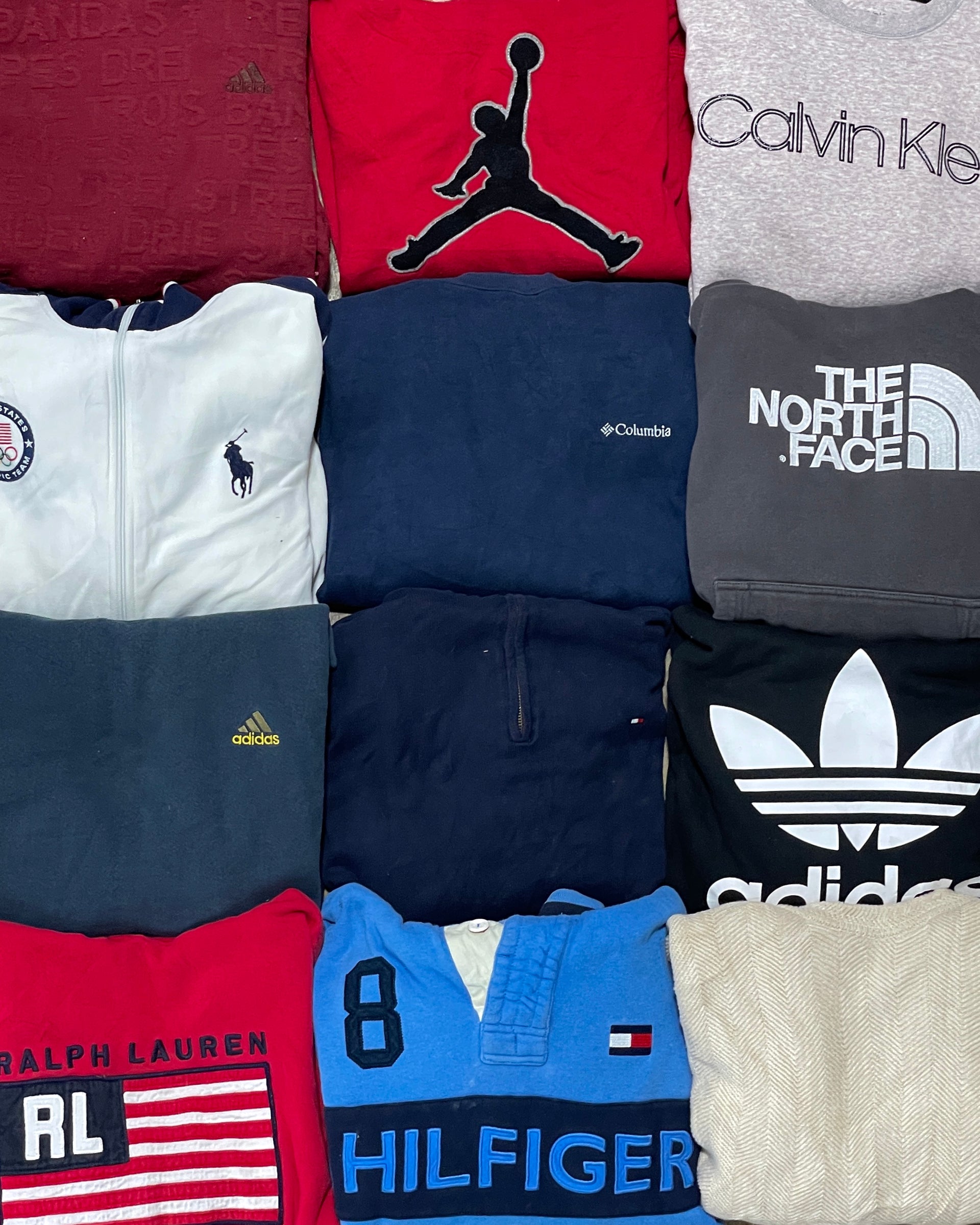A Guide to Choosing Weather-Appropriate Branded Clothing Materials
A Guide to Choosing Weather-Appropriate Branded Clothing Materials
Blog Article
The Importance of Lasting Garments: Exactly How It Impacts the Environment and Your Wardrobe
Sustainable clothing is increasingly recognized for its vital role in lessening the ecological effect of the fast fashion business. By concentrating on environmentally friendly products and ethical production approaches, it attends to pushing eco-friendly issues. This shift not just benefits the earth however additionally influences consumer choices, leading to a more thoughtful strategy to closet management. Recognizing these dynamics raises crucial concerns about style's future and personal duty fit it.
The Environmental Footprint of Rapid Style

Advantages of Lasting Products
Lasting materials provide significant benefits, specifically via green material options that reduce environmental damage. These materials also demonstrate toughness and long life, decreasing the requirement for constant substitutes. As an outcome, they add to a more sustainable fashion sector and advertise responsible customer habits.
Eco-Friendly Fabric Selections
While the style industry has actually long been related to rapid fads and ecological harm, the increase of environmentally friendly material choices provides a transformative possibility. Sustainable products such as natural cotton, hemp, and Tencel have gotten appeal due to their reduced ecological impact. These materials are commonly produced without damaging chemicals and call for less water, minimizing their carbon impact - Branded Clothing. Additionally, several environmentally friendly materials are biodegradable, adding to a round economic situation by decreasing waste. Picking sustainable products not just sustains ecologically accountable practices yet likewise promotes much healthier ecological communities. As consumers become extra mindful of their buying power, the need for green textiles encourages brands to introduce and adopt more sustainable manufacturing approaches, ultimately benefiting the world and future generations
Resilience and Long Life Advantages
Lots of consumers are progressively acknowledging the longevity and longevity benefits of lasting products in their clothes selections. Unlike conventional textiles, lasting materials such as natural cotton, hemp, and recycled polyester are crafted to endure damage, leading to garments that last longer. This decreased frequency of substitute not only conserves consumers money in time but also diminishes waste produced by fast style. On top of that, lasting apparel frequently utilizes environment-friendly manufacturing methods that enhance fabric stamina, contributing to a reduction in the total carbon footprint. By buying long lasting clothing, customers can grow a much more sustainable closet while enjoying top notch items that keep their aesthetic and capability gradually. As a result, longevity and long life stand as crucial advantages of picking lasting products.
Minimizing Waste With Lasting Practices
Decreasing waste in the apparel industry can be attained with cutting-edge techniques such as upcycling and repurposing products. Furthermore, taking on minimalist closet techniques urges consumers to prioritize quality over quantity, ultimately decreasing garments consumption. Together, these methods add substantially to a more lasting clothing design.
Upcycling and Repurposing Products
Upcycling and repurposing materials have actually arised as ingenious approaches in the fashion business, changing thrown out textiles into beneficial brand-new products. This technique not only reduces waste yet also motivates creative thinking and originality in garments layout. By taking old garments and materials, designers can produce unique pieces that show individual design while decreasing the need for brand-new sources. Furthermore, upcycling frequently needs much less power and water contrasted to typical manufacturing processes, significantly reducing the ecological impact of style. As customers become extra knowledgeable about sustainability, the popularity of upcycled clothing continues to rise, advertising a round economic climate. Inevitably, these practices add to a much more lasting future, where style focuses on ecological wellness over rapid manufacturing and intake.

Minimal Wardrobe Methods
As individuals progressively seek to minimize their ecological influence, taking on minimalist wardrobe approaches has actually gotten traction as an effective approach to lasting style. These methods highlight high quality over quantity, encouraging consumers to curate a smaller collection of functional, sturdy garments. By concentrating on ageless pieces that can be blended and matched, people can lower the frequency of purchases and ultimately decrease waste.Additionally, minimalism promotes conscious intake, prompting shoppers to reflect on the honest and ecological effects of their click for more info options. This approach not just cultivates a much more sustainable way of living but likewise simplifies everyday decision-making relating to clothes. As people accept minimalist concepts, they contribute to a style society that values sustainability and accountable consumerism, inevitably causing a more eco-conscious culture.
The Function of Moral Labor in Sustainable Fashion
While several consumers are increasingly familiar with the ecological consequences of their apparel choices, the relevance of ethical labor methods in lasting fashion can not be ignored. Moral labor encompasses reasonable wages, risk-free working problems, and respect for employees' rights, developing the foundation of responsible style production. Brand names that focus on ethical labor not only boost areas however additionally set a standard for liability in the industry.Moreover, the integration of honest techniques fosters transparency, making it possible for consumers to make enlightened options concerning their purchases. This method contrasts dramatically with rapid style's exploitative labor models, which frequently focus on earnings over individuals. By sustaining firms committed to ethical labor, customers add to a system that values human dignity together with ecological sustainability. Consequently, ethical labor is not just an add-on; it is necessary to the more comprehensive goal of sustainable fashion, making sure that the pursuit for eco-friendliness does not come with the expense of civils rights.
The Influence of Sustainable Clothes on Carbon Emissions
Sustainable clothing has the possible to substantially lower carbon discharges connected with the apparel industry. Conventional garment manufacturing adds notably to greenhouse gas discharges, mainly due to energy-intensive manufacturing procedures and the use of non-renewable sources. On the other hand, lasting fashion concentrates on environment-friendly products, such as organic cotton or recycled fibers, which typically need less power to produce.Moreover, sustainable brands have a tendency to adopt more effective manufacturing practices, lessening waste and reducing general emissions. By prioritizing sturdiness and timeless layout, lasting garments motivates customers to buy much less regularly, more reducing the carbon impact related to overconsumption.Additionally, many sustainable brand names are committed to transparency in their supply chains, allowing customers to make informed options that line up with their worths. Ultimately, moving in the direction of lasting clothes can bring about a significant decrease in carbon emissions, contributing to a much healthier earth and a more lasting future for the fashion business.
Sustaining Local Economies With Sustainable Selections
The change toward sustainable clothes not just addresses ecological worries yet additionally considerably benefits local economies. By choosing sustainable fashion, consumers frequently support small companies and regional craftsmens, enhancing neighborhood durability. These business commonly operate a smaller scale, prioritizing craftsmanship and ethical practices over mass production.Investing in locally made lasting clothing cultivates work development and promotes economic development within areas. As customers become extra knowledgeable about the environmental impact of their acquisitions, they significantly look for items that reflect their worths. This demand encourages neighborhood suppliers to take on lasting methods, adding to a circular economy.Moreover, sustaining neighborhood services minimizes transportation exhausts, lining up with eco-conscious consumer actions. The interconnectedness of lasting clothing and neighborhood economies emphasizes the crucial function that private choices play in advertising both economic and environmental health and wellness. By cultivating these local links, areas can prosper while additionally working towards an extra sustainable future.
Transforming Your Wardrobe: Tips for a Sustainable Wardrobe
As individuals seek Read Full Report to lower their ecological effect, transforming a wardrobe right into a sustainable wardrobe comes to be a vital action. One effective strategy is to examine existing clothing, maintaining only products that are worn consistently and that line up with sustainability objectives. redirected here Prioritizing high quality over amount is important; spending in durable pieces from eco-friendly brands can substantially decrease waste.Additionally, integrating second-hand products can rejuvenate a wardrobe while lessening ecological damage. Organizing clothes swaps with good friends or donating unused products can better advertise sustainability.When buying, individuals must look for materials that are organic, recycled, or eco-friendly, and stay clear of fast fashion merchants - Branded Clothing. Ultimately, practicing conscious intake by attentively considering each purchase can add to an extra sustainable lifestyle. By executing these suggestions, one can create a wardrobe that mirrors individual design while supporting environmental stewardship
Frequently Asked Questions
How Can I Identify Sustainable Clothing Brands?
To identify sustainable clothing brand names, one need to look into products utilized, inspect for accreditations like Fair Trade, and take a look at the brand's transparency about their production procedures, labor practices, and ecological effect, making sure honest and environment-friendly methods are focused on.
What Are the Expenses Associated With Lasting Fashion?
The expenses connected with sustainable style can differ considerably. Greater production expenses, honest sourcing, and green products often bring about boosted list prices, which may discourage some customers while attracting ecologically conscious consumers.
Can Sustainable Clothing Be Stylish and Trendy?
Sustainable apparel can undoubtedly be fashionable and stylish. Developers significantly prioritize innovative products and moral production techniques, showing that fashion and sustainability can coexist. Consumers now have varied choices that mix appearances with environmental awareness.
How Does Laundering Clothes Affect Their Sustainability?
Washing clothing substantially effects sustainability by consuming water and power, adding to pollution, and triggering microplastic release. Frequent washing can weaken fabrics, reducing their lifespan and boosting the demand for replacements, eventually aggravating ecological concerns.
What Is the Life Expectancy of Lasting Apparel Compared to Quick Style?
The life-span of lasting clothing normally exceeds that of fast fashion products, often enduring numerous years due to high quality materials and craftsmanship. On the other hand, rapid style garments may weaken quickly, requiring even more regular replacements. Lasting garments is increasingly identified for its crucial function in reducing the environmental impact of the fast fashion sector. While several customers are progressively conscious of the ecological repercussions of their garments options, the relevance of moral labor techniques in lasting style can not be forgotten. Branded Clothing. Lasting apparel has the possible to greatly reduce carbon emissions associated with the style sector. In contrast, sustainable style concentrates on green products, such as organic cotton or recycled fibers, which typically need less power to produce.Moreover, lasting brands often tend to embrace a lot more efficient production methods, reducing waste and lowering overall emissions. By focusing on longevity and classic style, sustainable apparel urges consumers to acquire much less frequently, more minimizing the carbon footprint linked with overconsumption.Additionally, numerous lasting brands are devoted to transparency in their supply chains, making it possible for customers to make enlightened selections that line up with their values
Report this page